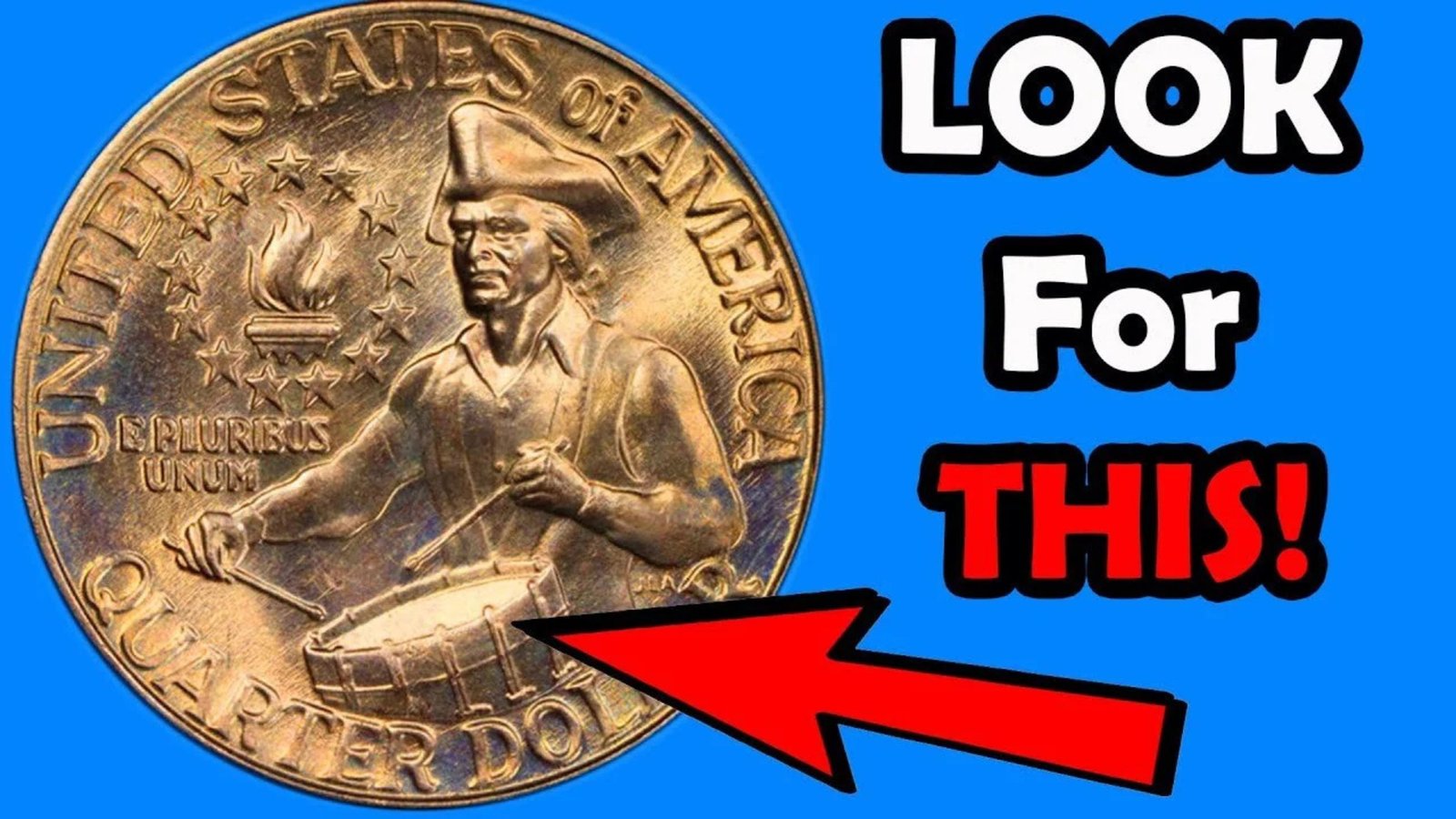Rare Bicentennial Quarter Valued : In the world of coin collecting, hidden treasures often lie in plain sight. One such treasure is a rare Bicentennial Quarter—a coin minted to commemorate America’s 200th birthday—that has been valued at a jaw-dropping $1 million. Even more astonishing? This rare specimen is still in circulation, possibly passing from hand to hand in everyday transactions.
A Celebration of America’s 200th Birthday
The Bicentennial Quarter was issued in 1975 and 1976 to celebrate the 200th anniversary of the United States. Instead of the traditional eagle reverse, this special quarter features a Colonial drummer boy with a torch surrounded by 13 stars, designed by Jack L. Ahr.
To distinguish these commemorative coins, the U.S. Mint gave them a unique dual date: “1776–1976.” Over 1.6 billion Bicentennial quarters were produced, making them incredibly common—at least, most of them.
What Makes This Quarter Worth $1 Million?
The $1 million Bicentennial quarter isn’t your average drummer boy coin. It’s an ultra-rare mint error or prototype with several key characteristics that elevate its value:
-
Struck in 90% silver rather than the typical copper-nickel clad.
-
Proof-quality finish or a “deep cameo” strike, usually meant for collectors but never released.
-
Misstruck errors, such as off-center stamping or doubled dies.
-
Perfect condition, often graded MS-68 or higher by professional coin grading services.
Only a handful of these rare Bicentennial quarters exist, and collectors are willing to pay a fortune to own one—especially one that meets all of the above criteria.
Still in Circulation?
You might be wondering: How can such a valuable coin still be circulating? The truth is, it’s not uncommon for rare coins—especially mint errors or prototypes—to accidentally enter the public money supply. They could have been mistakenly released or unknowingly spent by someone unaware of their true value.
That means your pocket change, coin jar, or bank roll might hold more than just 25 cents—it could hide a million-dollar gem.
How to Identify a Valuable Bicentennial Quarter
If you want to start checking your change, here’s what to look for:
-
Check the date: It must read “1776–1976.”
-
Look at the edge: A silver edge (instead of the usual copper stripe) may indicate a 40% or 90% silver version.
-
Inspect the detail: Proof-like or deep cameo finishes suggest a rare collector’s strike.
-
Look for errors: Doubling, off-center designs, or unusual textures can mean it’s a mint error.
-
Weigh the coin: Standard clad quarters weigh 5.67g. Silver ones are heavier (around 5.75g).
What To Do If You Think You Have One
If you suspect you’ve found a rare Bicentennial quarter:
-
Do not clean it — this can dramatically lower its value.
-
Handle it carefully — ideally with gloves.
-
Take it to a professional — get it evaluated by a reputable coin dealer or submit it to a grading service like PCGS or NGC.
A Reminder of Hidden Value
The story of the million-dollar Bicentennial quarter reminds us that history and value often go hand-in-hand—and sometimes hide in the most ordinary places. With so many of these coins still in circulation, even today, collectors and hobbyists are constantly on the lookout for that one rare strike that could change their lives.
So next time you get a quarter in your change, take a closer look. It might just be worth far more than you think.
